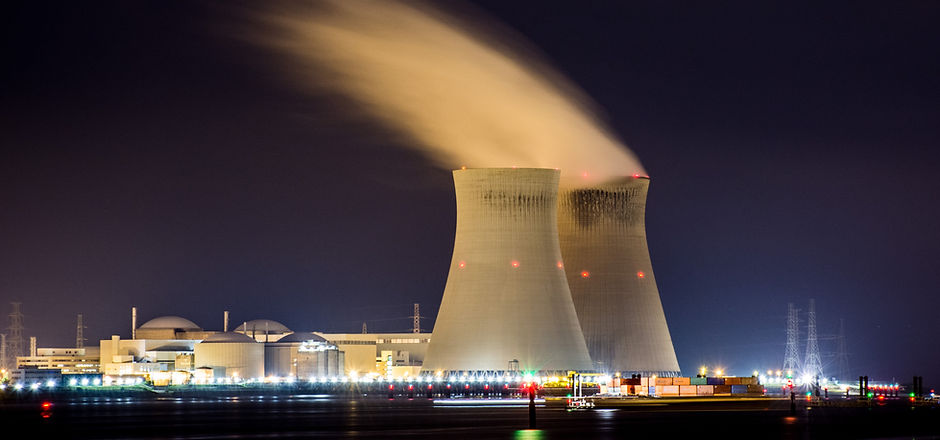Will I Grow A Third Arm?: An Examination of Nuclear Power
Andrew C. Renz

Editorial
For as long as I can remember, I’ve been hearing the phrase “climate change,” and the other major one, “global warming.” I have wondered, from a young age, how many years the human race had left to meddle with the way the Earth functioned. Admittedly, the future felt grim. Many of us have lived through this childhood. It was a childhood of solemn warnings; magazines, newspapers, documentaries, and other assorted broadcasts have all deemed our planet to be quickly spiraling towards doom. Why? Well, all of these sources imply that global human ignorance and greed have rendered our race somewhat blind to the longevity and general future of our home for centuries now. To continue without any major attention towards the issue of global warming would arguably be to wish for certain planetary destruction, as excessive heat due to climate change will be damaging to the vast majority of life. There are answers to the dilemma though, and if they are recognized, there is the possibility of a future. Science has come so far as to offer a bountiful selection for alternative fuels, whether they be solar, hydro, nuclear, wind, or the like. However, more needs to be done in the effort to save our planet. So, what does the future look like without nuclear power, or any other greater reliance on alternative energies?
What will the planet look like? What characteristics will be adopted? What can be expected of the environment? The issue is fairly straightforward. To begin with, the temperatures will rise, as the term “global warming” implies. The trapped UV rays from the sun will gradually turn the heat up on Earth’s thermostat (Environmental). As a result of a global increase in heat, the arctic circles are liable to melt and contribute to the already rising water levels, which will primarily affect those in oceanside areas low in elevation. For example, in the United States, Florida will be increasingly at risk as an increase of upwards of eight feet of water will move more of the ocean inland, and thus the shorelines relevant now will be underwater. Predictions state that this eight foot sea level rise could happen within seven to eight decades. Furthermore, precipitation will continue to heighten in volume, and thus so will hurricanes and other assorted storm events mostly of the tropical variety. Heat waves will grow in intensity, and droughts will become more prevalent. All of this will render our shores borderline uninhabitable and our nation as whole more quickly eroded, which could directly affect the production of crops for our growing populations (NASA).
Locally in the United States, weather patterns will continue to change. Within the Northeast, the increase in rain and temperature will continue to damage ecosystems, especially those that are aquatic, as the underwater life will struggle to comply with the rises in temperature and raw increases in habitat volume. Further South, the increase in heat will severely damage the ability of farmers to produce crops, as erosion and less consistent rainfall will challenge the growth of the plants. The Midwest will suffer from the same dilemma, as temperature rises will damage crop yields, and soil will be at even more of an erosion risk. Rising temperatures will also severely damage the ecosystems within the Great Lakes. On the West coast, erosion will become even more detrimental. The combination of debilitating heat waves and heavier downpours will be detrimental towards the soil. Dryer brush and other flora and fauna will present an even more serious fire risk. The already present decline in availability of water will continue to worsen as levels of drought will continue to increase (NASA). The populations in warmer climates will have to learn to adapt to the increase in already scorching temperatures (Stager).
All of these effects are the result of pollution. Petroleum fuel byproducts release carbon dioxide. When released into the environment, these molecules of carbon dioxide trap UV rays from the sun, and thus trap the heat as well. This trapped heat is released into the environment below the ozone layer. The released heat alters the functioning of ecosystems globally (EPA).
Nuclear power stands as an environmentally safer alternative to petroleum based energy sources. Nuclear power plants produce no greenhouse gasses while they are active. By equivalency, nuclear power produces the same level of emissions as wind and one third of the emissions that solar energy outputs (World Nuclear).
What is left to do? For longevity’s sake, it is of the utmost importance that more renewable/alternative energy sources be used as time moves on. The rise in electric vehicles (EVs) helps with vehicle emissions, as there is less carbon output, however, the means of production and transportation are all likely fueled by petroleum, which pumps carbon into the atmosphere. With any change, there will have to be gradual increments and assorted growing pains. It is the change and serious effort that remains paramount in our situation, and some nations have already pioneered in the direction of environmental neutrality, such as Sweden. Most nations have implemented nuclear power. America, China, France, Ukraine, and Japan are just a few. The importance is in the message that it is not too late, and that any and all of the domestic and national effort to move away from petroleum fuels will aid in the health of our home, planet Earth.
Bibliography
Environmental Protection Agency (EPA). “Basic Ozone Layer Science.” Accessed 4 May 2022.
NASA. “The Effects of Climate Change.” NASA, 26 Aug. 2021. Accessed 4 May 2022.
Stager, Curt. “What Happens After Global Warming.” Nature Publishing Group, 2012. Accessed
4 May. 2022.
World Nuclear Association “How Can Nuclear Power Combat Climate Change?” Accessed 4
May 2022.